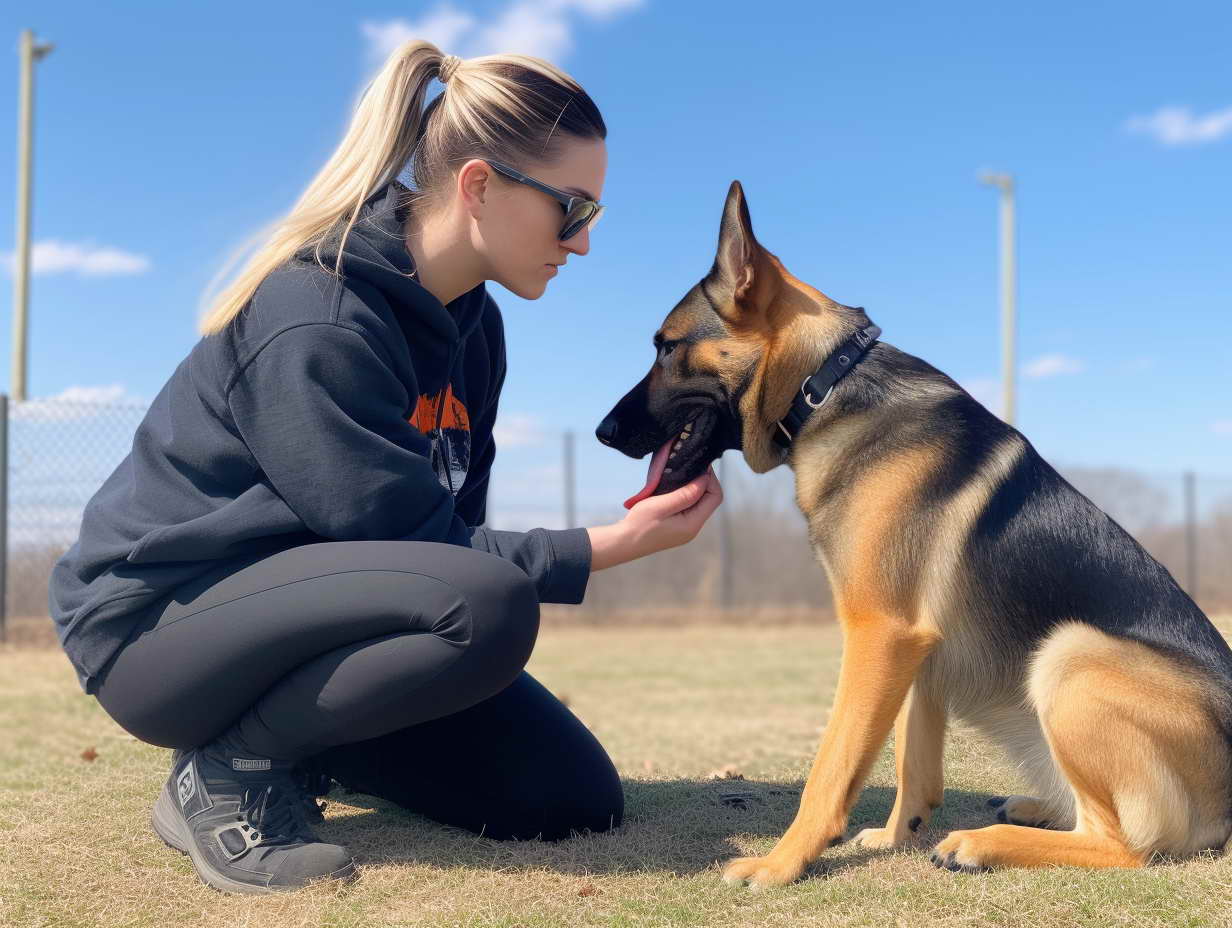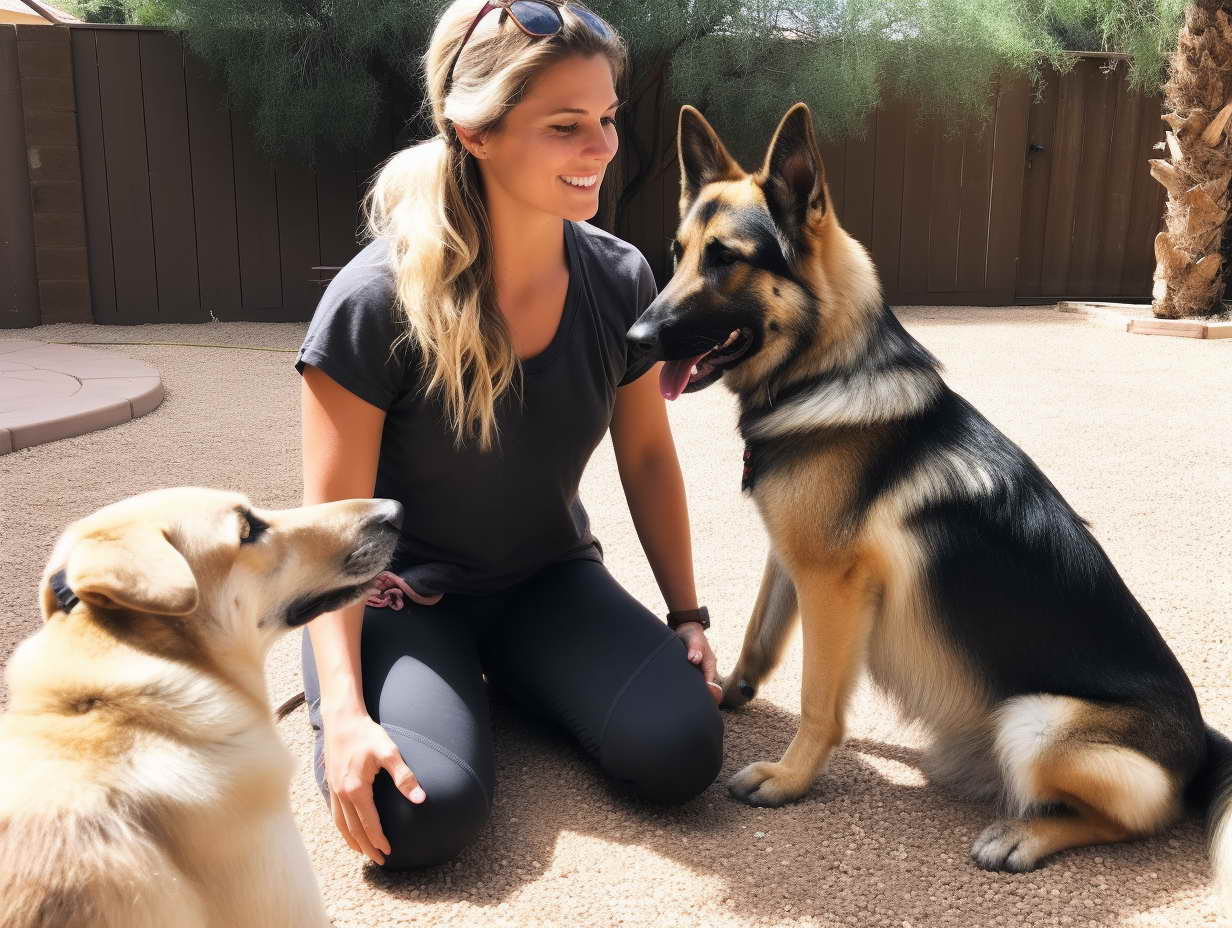Umbilical Dog Training: The Ultimate Guide to a Well-Behaved Canine Companion
Introduction
Bringing a new dog into your life is an exciting and rewarding experience. However, as any dog owner knows, it can also be challenging. One effective training method that has gained popularity among pet owners is “Umbilical Dog Training.” In this comprehensive guide, we’ll delve deep into the world of Umbilical Dog Training, exploring its benefits, and techniques, and providing answers to frequently asked questions.
Understanding Umbilical Dog Training
Umbilical Dog Training is a unique and effective method that has gained popularity among dog owners seeking to cultivate a well-behaved and obedient canine companion. This technique derives its name from the concept of keeping your dog physically tethered to you, much like an umbilical cord connects a mother to her newborn. While the physical attachment is not as permanent as an umbilical cord, it serves a similar purpose by fostering a strong and nurturing bond between you and your furry friend.
The Foundations of Umbilical Dog Training
At its core, Umbilical Dog Training relies on the principles of positive reinforcement and close supervision. Here’s how it works:
- Physical Connection: To initiate Umbilical Dog Training, you’ll need a leash and a harness. Attach the leash to your dog’s harness, ensuring a secure connection. Then, secure the other end of the leash to your waist or belt. This setup ensures that your dog remains in close proximity to you throughout the training session.
- Positive Reinforcement: Positive reinforcement is the linchpin of this training method. Whenever your dog exhibits desirable behavior, such as sitting when asked or walking without pulling on the leash, promptly reward them. Rewards can include treats, verbal praise, or affectionate gestures like petting and cuddles. By associating good behavior with positive outcomes, your dog will be motivated to repeat these actions.
- Constant Supervision: With your dog tethered to you, you’ll have the opportunity to closely monitor their actions and reactions. This continuous supervision enables you to intervene immediately when undesirable behavior occurs, helping your dog understand which actions are unacceptable.
Building Trust and Communication
One of the remarkable aspects of Umbilical Dog Training is the trust and communication it fosters between you and your four-legged companion. By sharing the same space and activities, you and your dog become attuned to each other’s cues and signals.
This training method allows you to:
- Understand Your Dog Better: Spending extended periods together helps you recognize your dog’s moods, needs, and body language. This heightened awareness enables you to address their needs promptly and effectively.
- Clearer Communication: With your dog consistently within arm’s reach, you can issue commands and cues clearly and directly. This minimizes confusion and reinforces your role as the leader of the pack.
- Foster a Strong Bond: Sharing experiences and moments throughout the day creates a strong emotional bond between you and your dog. This bond forms the foundation for a healthy and loving relationship.
Practical Applications of Umbilical Dog Training
Umbilical Dog Training can be applied to various aspects of your dog’s life, from basic obedience to addressing specific behavioral issues. Here are some scenarios where this method proves highly effective:
- Leash Training: If your dog tends to pull on the leash during walks, Umbilical Dog Training provides ample opportunities to correct this behavior through consistent reinforcement.
- House Training: For puppies or dogs that need help with housebreaking, this method allows you to closely monitor their bathroom habits and guide them outdoors at the right times.
- Curbing Destructive Behavior: If your dog has a tendency to chew furniture or exhibit destructive behavior when left alone, tethering them to you can prevent such actions and encourage better habits.

Getting Started with Umbilical Dog Training: The Essentials
Embarking on your Umbilical Dog Training journey requires careful preparation and a clear understanding of the fundamentals. Before you start, gather the essential equipment and adopt the right mindset for successful training.
Necessary Equipment
- Leash: The first and most crucial piece of equipment is a sturdy leash. Opt for a leash that is comfortable for both you and your dog. A leash made of durable material with a comfortable handle is ideal.
- Harness: Instead of using a collar, which can put unnecessary strain on your dog’s neck, consider a harness. A harness evenly distributes the pressure and ensures your dog’s comfort during training.
- Treats: High-quality dog treats are essential for positive reinforcement. Choose treats that your dog loves and are easy to carry. Treats serve as rewards for your dog’s good behavior.
- Clicker (Optional): Some trainers incorporate a clicker as a sound marker to signal desired behavior. While not mandatory, it can be a helpful tool for precise communication.
The Right Mindset
Before diving into Umbilical Dog Training, adopt the following mindset to set yourself up for success:
- Patience: Understand that training takes time, and your dog may not grasp commands immediately. Be patient and avoid frustration.
- Consistency: Consistency is key in dog training. Ensure that all family members use the same commands and reward system. Inconsistency can confuse your dog.
- Positive Reinforcement: Embrace positive reinforcement as the core of your training approach. Reward your dog promptly and enthusiastically when it exhibits desired behaviors.
- Short Sessions: Keep training sessions short and focused, typically around 10-15 minutes. Dogs have shorter attention spans, so shorter, more frequent sessions work best.
- Positive Attitude: Maintain a positive attitude throughout training. Dogs are sensitive to their owner’s emotions, and a positive demeanor encourages them to learn.
Preparing Your Dog
Before attaching the leash and beginning the training process, ensure your dog is well-exercised and has had an opportunity to relieve themselves. A tired dog is often more focused and receptive to training.
Proper Leash Attachment
When attaching the leash to your dog’s harness, ensure that it is secure but not too tight. Your dog should have enough freedom to move comfortably but not so much that they can wander away from you. The leash should be attached to a harness that fits snugly but does not chafe or restrict your dog’s movements.
Finding a Suitable Training Environment
Choose a quiet and distraction-free environment for your initial training sessions. This allows your dog to concentrate on the training commands without external distractions.
Start with Simple Commands
Begin your Umbilical Dog Training journey by introducing simple commands like “sit,” “stay,” or “come.” These basic commands form the foundation for more advanced training.
Mastering Umbilical Dog Training Techniques
Umbilical Dog Training is a powerful method that relies on specific techniques to foster obedience, strengthen the bond between you and your dog, and promote positive behaviors. To ensure a successful training journey, let’s explore these techniques in detail.
1. Positive Reinforcement: The Cornerstone of Success
Positive reinforcement is at the heart of Umbilical Dog Training. This technique involves rewarding your dog when they exhibit desired behaviors. Here’s how to make the most of positive reinforcement:
- Timely Rewards: Offer treats, verbal praise, or affection immediately after your dog performs the desired behavior. This immediate reward reinforces the connection between the action and the positive outcome.
- Consistent Rewards: Be consistent in your rewards. Use the same treats or praise consistently to prevent confusion.
- Varied Rewards: While treats are effective, mix in other forms of rewards, like verbal praise and physical affection. This variety keeps your dog engaged and motivated.
2. Consistency Is Key
Consistency in training commands and rewards is crucial for your dog’s understanding. Ensure that all family members use the same commands and reward system to prevent confusion. Consistency provides clear communication and reinforces the desired behavior.
3. Short and Frequent Sessions
Dogs have shorter attention spans, so it’s essential to keep training sessions short and engaging. Aim for 10-15 minute sessions multiple times a day. This approach maintains your dog’s focus and prevents boredom.
4. Patience and Persistence
Training your dog takes time and patience. Understand that they may not grasp commands immediately. Stay persistent and maintain a positive attitude, even in the face of setbacks. Consistent training efforts will yield positive results over time.
5. Clear and Confident Commands
When issuing commands, use a clear and confident voice. Dogs respond best to assertive, well-articulated commands. Avoid shouting or using a hesitant tone, as this can confuse your dog.
6. Timing Is Everything
Timing plays a crucial role in Umbilical Dog Training. Deliver rewards and praise promptly after your dog performs the desired behavior. This immediate reinforcement reinforces the connection between their action and the reward.
7. Gradual Progression
As your dog becomes proficient with basic commands, gradually introduce more advanced commands and challenges. This gradual progression ensures that your dog continues to learn and grow.
8. Monitoring and Corrections
Umbilical Dog Training allows you to closely monitor your dog’s behavior. If they exhibit undesirable actions, such as chewing on furniture or barking excessively, intervene immediately with a firm “no” and redirect their attention to an appropriate activity. Consistent monitoring and corrections help shape your dog’s behavior.
9. Socialization Opportunities
Make the most of Umbilical Dog Training by incorporating socialization into your routine. Take your dog to various environments, allowing them to interact with different people, animals, and experiences. This exposure helps your dog become well-adjusted and confident.
10. Adapt to Your Dog’s Needs
Every dog is unique, so adapt your training techniques to suit your dog’s temperament and learning pace. Be flexible and willing to try different approaches if a particular method doesn’t yield the desired results.
Conclusion
Umbilical Dog Training is a fantastic way to create a strong bond with your dog while instilling good behavior. Remember that consistency, patience, and positive reinforcement are the keys to success. With dedication and love, you can transform your furry friend into a well-behaved and loyal companion.

Leave a Reply